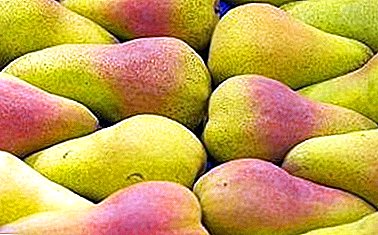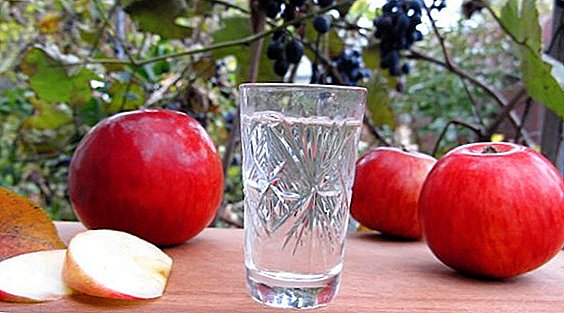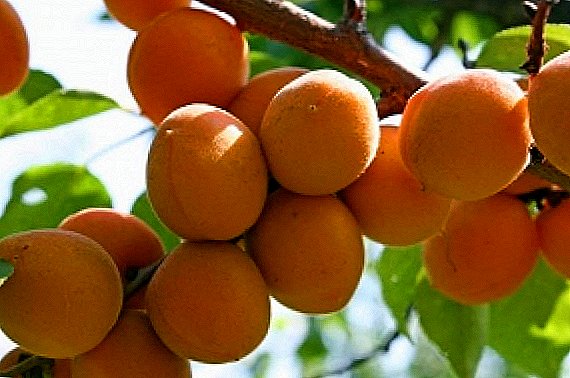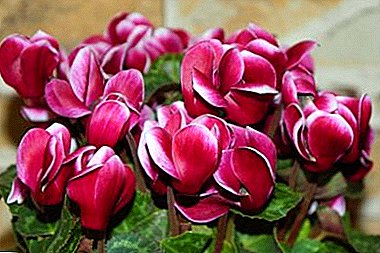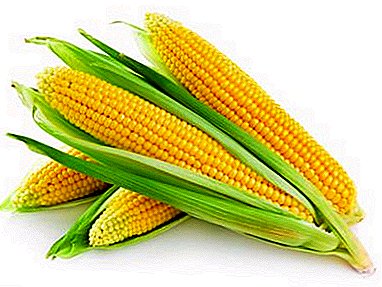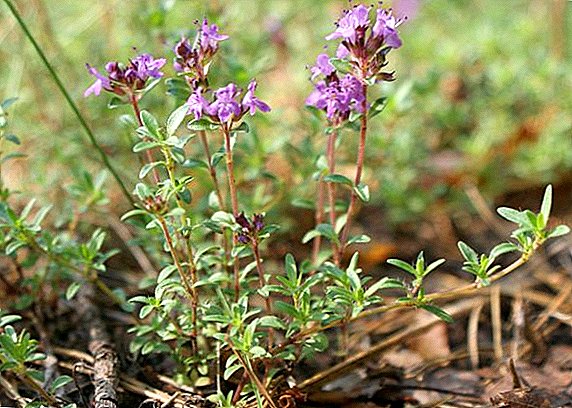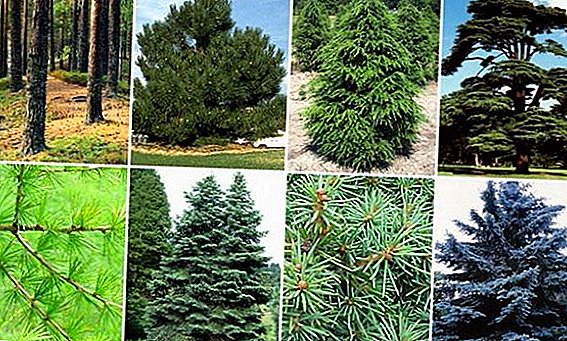 Virtually all conifers are evergreen, which is why they are so loved and popular among landscape designers. High and dwarf, pyramidal and cone-shaped, with needles and deciduous - these plants will decorate any park, garden or suburban area. In this article, you will learn what conifers and their species are.
Virtually all conifers are evergreen, which is why they are so loved and popular among landscape designers. High and dwarf, pyramidal and cone-shaped, with needles and deciduous - these plants will decorate any park, garden or suburban area. In this article, you will learn what conifers and their species are.
Araucaria
Araucaria tree - one of the conifers grown in indoor conditions. The plant combines 19 species, grows in Australia, New Zealand, South America. Araucaria wood is used in the manufacture of furniture, and the seeds are eaten.
Araucaria can be needle-like and have thin lance-shaped leaves. The plant is grown mainly as an ornamental in pots in greenhouses or winter gardens, in room conditions the flowering of the plant is somewhat difficult, but Araucaria is also beautiful without flowering. Araucaria is believed to purify the air. The most famous varieties of these conifers are the spruce, Brazilian araucaria, Cook araucaria, and Chilean araucaria.
Araucaria variegated or room spruce - these are trees with a crown in the shape of a pyramid, growing to 60 meters in height. The bark of trees is brown, scaly. Horizontally growing branches depart from the trunk at an angle of 90˚. Soft leaves in the form of awls look like tetragonal needles 2 cm long, the color of the needles is pale green. The homeland of the plant is the island of Norfolk, in room conditions the plant grows slowly, especially if determined in close capacity.  The narrow-leaved Araucaria, or Brazilian Araucaria, is common in the wild in the mountainous regions of Brazil, where it grows to 50 meters in height. She has a hanging type of thin shoots, with long, up to 5 cm leaves of lanceolate elongated shape, rich green color. In room conditions it grows up to three meters.
The narrow-leaved Araucaria, or Brazilian Araucaria, is common in the wild in the mountainous regions of Brazil, where it grows to 50 meters in height. She has a hanging type of thin shoots, with long, up to 5 cm leaves of lanceolate elongated shape, rich green color. In room conditions it grows up to three meters.
Columnar Araucaria, or Cook Araucaria, grows in nature on the islands of New Caledonia. A distinctive feature of the tree: the crown begins at the very surface of the earth, resembling cypress trees.
Chilean Araucaria is common in Chile and Argentina. In nature, it grows to 60 meters, the diameter of the trunk is one and a half meters. The crown is wide, pyramidal, the lower branches lie on the ground. 
Important! Araucaria when grown at home is constantly in need of moisture. Do not allow the soil to dry out and water the plant with rain or cooled boiled water.
Capitate
Conifers of the family Golovchatotisovye represented only six species. These plants grow in China, Korea, Japan, on the island of Taiwan, in East India. These are trees or shrubs with growing either in pairs opposite to each other, or forming bunches with whorled branches. The leaves of the capitolinae are arranged alternately in two lines, narrow, dense.  Capitate yews can be monoecious, that is, they can self-pollinate, having both male and female flowers, and dioecious, that is, male and female flowers are located on different plants of the species. Male cones of these conifers ripen in the first days of spring, their length is from 4 to 25 mm, in typical representatives of the species the cones form spherical clusters, which was the reason for the name of the species. Female cones resemble the structure of a berry more, they contain from one to several seeds protected by dense flesh - aryllus, this formation of green or pink shades is soft, for which birds love it. Apparently, birds and small rodents spread the seeds, thereby contributing to the reproduction of the species. Capsules are not well understood. The most common varieties of these conifers are:
Capitate yews can be monoecious, that is, they can self-pollinate, having both male and female flowers, and dioecious, that is, male and female flowers are located on different plants of the species. Male cones of these conifers ripen in the first days of spring, their length is from 4 to 25 mm, in typical representatives of the species the cones form spherical clusters, which was the reason for the name of the species. Female cones resemble the structure of a berry more, they contain from one to several seeds protected by dense flesh - aryllus, this formation of green or pink shades is soft, for which birds love it. Apparently, birds and small rodents spread the seeds, thereby contributing to the reproduction of the species. Capsules are not well understood. The most common varieties of these conifers are:
- Golchatchatotis Harrington. This subspecies of botany first learned, it is most common in cultural cultivation. Under natural conditions, it grows in mountain forests and coastal cliffs of Japan. The plant loves moisture, tolerates shade. In nature it grows up to 10 meters, in culture it is a small tree or a bush.
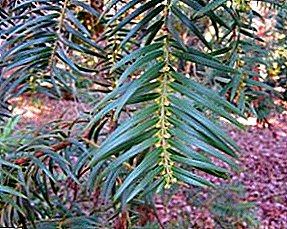 Golchatchatotis Forchuna. If it grows with a tree, it stretches up to 12 meters in height, sometimes it grows with a bush. The homeland of the species is China, nowhere else in nature. The tree has a red-brown bark, leaves up to 8 cm in length and 5 cm in width. About cultivation in culture, little is known.
Golchatchatotis Forchuna. If it grows with a tree, it stretches up to 12 meters in height, sometimes it grows with a bush. The homeland of the species is China, nowhere else in nature. The tree has a red-brown bark, leaves up to 8 cm in length and 5 cm in width. About cultivation in culture, little is known.
Cypress
Coniferous trees of the Cypress family are represented by both trees and shrubs. Plants are found in many territories and climatic zones: in the Sahara, China, North America, the Himalayas, the Mediterranean, the Caucasus, and the Crimea. Cypress has a slender straight or slightly curved trunk, a pyramidal crown or in the shape of a cone, a smooth gray bark, brown as it grows up and with small furrows. The branches are mainly located horizontally in relation to the trunk, there are drooping, for example, weeping Cypress.
Leaves in all species pressed to the branches, oval. Cypress single-house, that is, prone to self-pollination. Male cones on a short petiole, round or oval in shape, shiny, brown or grayish, the length of the cones is up to 3 cm. Female cones are a rod covered with scales that, when mature, take the form of scutes. Each shield contains from 8 to 20 winged brown seeds.
Cypress evergreen or ordinary. The tree is widespread in the south of Europe and in the western regions of Asia. Under natural conditions it grows up to 30 meters, it grows quickly. Crohn more often sprawling, but sometimes pyramidal. The needles are green-blue, tightly pressed to the branches. Gray-brown bumps up to 3 centimeters in diameter.  Cypress is Mexican or Louisiana. The wood of this coniferous tree species is valued in Mexico as a building material. The species prefers mixed mountain forests and rocky slopes. Interestingly, the first colonists who described the Mexican cypress, took it for cedar.
Cypress is Mexican or Louisiana. The wood of this coniferous tree species is valued in Mexico as a building material. The species prefers mixed mountain forests and rocky slopes. Interestingly, the first colonists who described the Mexican cypress, took it for cedar.  Cypress McNaba. This species is little known, unfortunately, because it is cold-resistant and promising for latitudes with a cold climate. These are ornamental trees with a lush conical-type crown, from 5 to 15 meters high. With high growth the trunk is not bare, as the branches fall to the ground.
Cypress McNaba. This species is little known, unfortunately, because it is cold-resistant and promising for latitudes with a cold climate. These are ornamental trees with a lush conical-type crown, from 5 to 15 meters high. With high growth the trunk is not bare, as the branches fall to the ground. 
Pine
The type of pine trees include: pine, spruce, cedar, fir, larch, hemlock. Most of them, with the exception of larch, are evergreens with smooth bark. The bark may be with scales or small longitudinal grooves. Pine monoecious plants have a pronounced aroma, tar. Almost all species have well developed lateral branches, densely covered with needles. Needles can grow in bunches and rows. Well developed buds form both male and female cones. Male yellow or red, often located at the end of the branch, poorly noticeable. Female cones are collected in a bundle and carry winged seeds without a soft shell.
Pine is common in Europe and Asia. The average height of pines is from 25 to 40 meters, some specimens grow up to 50 meters. Pine is used to produce ethanol, rosin and essential oils. Famous varieties: Glauca, Globosa Viridis, Aurea, Beuvronensis, Bonna, Candlelight, Viridid Compacta, Alba Picta, Albyns, Chantry Blue.
Siberian cedar is a tree high up to 40 meters with a dense crown and strong thick stems. The trunk is straight, even without furrows of gray-brown color. The needles are dark green, long to 14 cm. Cedar begins to bear fruit in the 60th year of life. Large 13 cm in length and 8 cm in circumference, the purple cones become brown as they mature. Despite late fruiting, the yield is quite impressive - up to 12 kg of nuts from one tree. Siberian cedar lives in the taiga conditions of Siberia. 
Did you know? In North America, growing pine, which bears the name of the last leader of the Aztec Indian tribe of Montezuma. The leader loved to decorate his headdress with the needles of this coniferous plant. The length of the needles of the Pines of Montezuma, or White Pine, is 30 centimeters.A prominent representative of pine trees are fir trees. These are strong long-livers, with a low pyramidal crown, smooth gray bark and small protrusions-formations in which the resin is stored. Fir is very popular in landscape design. For example, balsam fir has been known in culture since 1697. Most species of fir trees are not frost-resistant, with the exception of representatives living in taiga regions. Popular varieties include:
- Nana is a dwarf variety, with a crown in the shape of a flattened ball, with bright emerald-colored needles. At the age of ten, the growth of a tree is only half a meter;
- Piccolo - the variety is even smaller than Nana, the shape of the crown is the wrong oval, it resembles the previous variety. Needles growing radially, painted gray-green.
Podokarpovye
Among the species of conifers there is a family with the strange name Podokarpovye. Plants of this species like to grow in a humid and warm climate, often in swampy lands. The distribution area is quite large: South America, the Philippines, Africa, New Caledonia, New Zealand, Tasmania, India, Mexico, Japan and China. These are trees or shrubs with a strong straight trunk, sometimes there are branches in the bushes. The foliage is a small lanceolate form or needle, often located opposite. Plants are more often dioecious. Female cones consist of a single ovule, often without a shell. Male cones are solitary or in the inflorescences in the form of earrings.  Such types of families are known:
Such types of families are known:
- Phyllocladus is a tree up to thirty meters high.
- Dacridium Fonk - shrub no more than a meter.
- Dacridium loose-leaved - dwarf shrub, rises from the ground by 5-6 cm.
- Dacridium cypress - tree up to 60 cm, with a trunk thick to one and a half meters in diameter.
- The only parasite of the Dacridium family is Parasitaxus, living in New Caledonia, parasitizing on the trunks and roots of flowering plants.
Scyadopitis
All knowledge about these coniferous trees is collected in one genus - Scyadopitis, which is represented by a single species - Scyadopitis, whorled. This is an evergreen tree with a pyramidal crown, thin short branches, smooth bark without furrows. The tree reaches a forty-meter height. Foliage is of two types: small, narrow, lanceolate leaves and accrete needles. Plant monoecious. Male flowers are collected in spherical inflorescences at the tips of the branches, female flowers grow singly, each has 7-9 ovules. Cones long - 12 cm, gray-brown, with round edges of scales. Seeds, consisting of two cotyledons, winged. 
Interesting! The plant is successfully cultivated in many countries. Scyadopitis was introduced to Great Britain in the second half of the 19th century, on the Black Sea coast they learned about the plant in 1852, when it was introduced into the Nikitsky Botanical Garden. The plant was grown in Potsdam, Baden-Baden and many other European cities.In the homeland of the plant, in Japan, sciatopitis is grown in natural conditions - parks and forestry, and as a pot plant.
Yew
Most of the representatives of yew - evergreens. Yews number more than twenty species of hvoynikov. It is quite difficult to give them a general description, therefore we will consider the most famous and popular species separately.
The yew berry is a tree, high to 28 meters, with reddish bark, branches grow alternately, covered with soft, dark green needles. The plant is so named for its dense red flesh around the seeds, similar to berries. Yew berry - dioecious plant. Yew grows in Africa in the northwest, in Iran, Asia, in Russia, Europe, in the Carpathians, in the Kuriles and on the island of Shikotan, in the Caucasus. The yew berry almost disappeared due to excessive consumption of valuable wood with great strength. Parts of yew berry are used as a raw material for drugs. 
Attention! Yew is not planted in gardens, it does not tolerate heavy metal salts, any environmental pollution, may die if excessively wetted.Canadian Yew - a low shrub, up to one and a half meters in height and crown width - 2.7 meters. The branches grow oppositely, the foliage is small up to 2 cm long and the same in width, the tip of the leaf plate is sharp, the leaf petioles are short and thick. The color of the leaf plates is dark green. Distributed in Canada and the northern regions of the United States.
 Yew spiky grows in nature up to 20 meters, at home it grows more often with a bush. Branches of the skeletal structure, raised or prostrate. The leaves are narrow with a clear central vein, length - up to 2 cm, width - 3 mm. Sheet plate narrowed to the tip, dark green. In a natural environment it grows in the Far East, in Korea, Japan, China. Cultivated since 1854.
Yew spiky grows in nature up to 20 meters, at home it grows more often with a bush. Branches of the skeletal structure, raised or prostrate. The leaves are narrow with a clear central vein, length - up to 2 cm, width - 3 mm. Sheet plate narrowed to the tip, dark green. In a natural environment it grows in the Far East, in Korea, Japan, China. Cultivated since 1854. The yew is medium - it is a hybrid bred for garden cultivation, the parents are yew berry and yew pointed. This species was bred in the USA in 1900. It has signs of both donor cultures: the shape of the leaves, a clearly pronounced central vein on the plate, the structure of the branches. Winter-hardy.  Coniferous trees in landscape design are simply irreplaceable: in the autumn, when everything is black and sad, or in winter against a white background, these plants delight the eye with small green islets. In addition to the aesthetic view of plants, there is also an environmental benefit: hony branches are famous for their ability to “clean” the air space around them.
Coniferous trees in landscape design are simply irreplaceable: in the autumn, when everything is black and sad, or in winter against a white background, these plants delight the eye with small green islets. In addition to the aesthetic view of plants, there is also an environmental benefit: hony branches are famous for their ability to “clean” the air space around them.


 Golchatchatotis Forchuna. If it grows with a tree, it stretches up to 12 meters in height, sometimes it grows with a bush. The homeland of the species is China, nowhere else in nature. The tree has a red-brown bark, leaves up to 8 cm in length and 5 cm in width. About cultivation in culture, little is known.
Golchatchatotis Forchuna. If it grows with a tree, it stretches up to 12 meters in height, sometimes it grows with a bush. The homeland of the species is China, nowhere else in nature. The tree has a red-brown bark, leaves up to 8 cm in length and 5 cm in width. About cultivation in culture, little is known.